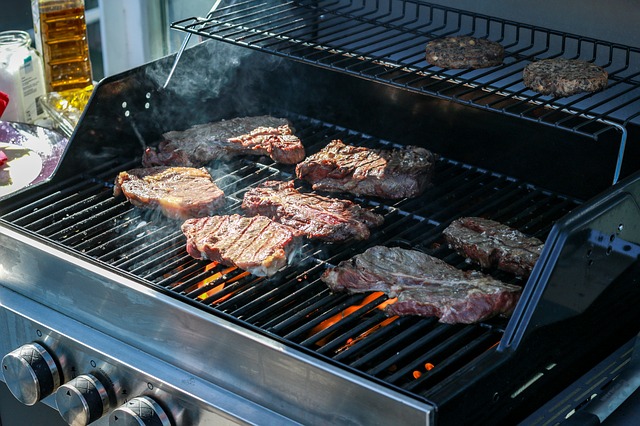Grilling on a Weber grill is a beloved pastime for many, offering delicious meals and memorable moments. However, to ensure your grill continues to perform at its best, it’s crucial to keep it clean. Regular cleaning not only enhances the flavor of your food but also prevents harmful bacteria buildup and reduces the risk of fire hazards. While cleaning your Weber grill grates might seem like a daunting task, with the right approach and supplies, it can be straightforward and rewarding. In this comprehensive guide, we’ll walk you through the process of how to clean your Weber grill grates effectively.
Why Regular Cleaning of Weber Grill Grates is Essential
Regular cleaning of your Weber grill grates is not just about aesthetics; it’s about safety and food quality. A dirty grill can negatively impact the taste and texture of your food, and the buildup of grease and food particles can lead to unwanted flare-ups and even fires. Maintaining a clean grill ensures that every meal you cook is not only delicious but also safe for consumption.
Supplies You’ll Need for Cleaning Weber Grill Grates
Before you begin the cleaning process, gather the following supplies:
- Cleaning gloves
- Grill brush
- Warm soapy water
- Sponge
- Non-lint terry cloth
- Mild glass cleaner
- Mild stainless steel cleaner
- Paper towels
- Paint scraper
Having these supplies on hand will make the cleaning process more efficient and thorough.
Step-by-Step Guide to Cleaning Your Weber Grill Grates
Step 1: Cleaning the Exterior
Start by ensuring the grill is cool to the touch. Wash the exterior of the grill with warm soapy water, then rinse thoroughly. Wipe the surface dry with a clean cloth to prevent water spots.
Step 2: Cleaning Stainless Steel Parts
For the stainless steel components, use a mild stainless steel cleaner. Apply the cleaner in a side-to-side motion with the grain, then buff the surface with a non-lint cloth to achieve a polished finish.
Step 3: Cleaning the Inside of the Lid
Over time, carbonized grease can build up on the inside of the lid. Use a stainless steel grill brush to remove these deposits, then wash the inside with warm soapy water and rinse thoroughly.
Step 4: Addressing Discoloration
If you notice any discoloration, clean the affected areas with warm soapy water and a sponge. Use a non-lint terry cloth to dry and buff the surface until it’s clean and residue-free.
Step 5: Cleaning Flavorizer Bars and Cooking Grates
Brush the flavorizer bars and cooking grates with a stainless steel grill brush to remove any food particles. Then, clean them with a rag soaked in warm soapy water, ensuring all residue is removed.
Step 6: Cleaning the Burner Tubes
Remove the cooking grates and flavorizer bars to access the burner tubes. Clean each tube individually by brushing up and down, not lengthwise, to avoid pushing debris from one port to another. For newer Genesis grills with front-located control knobs, clean from left to right. For older models with side-located controls, clean in an up-and-down motion.
Step 7: Cleaning the Cook Box
Inside the cook box, scrape away any grease pockets or food particles using a putty knife. Remove the bottom tray, scrape off any residue, and clean it with warm soapy water and a steel wool pad. Replace the drip pan and aluminum catch pan liner regularly, and avoid lining the bottom tray with foil, as it can interfere with heat distribution.
Step 8: Final Cleaning of Grilling Racks
Finally, clean the grilling racks with warm soapy water and a fine scouring pad. Rinse them thoroughly and dry them to prevent rusting.
Frequently Asked Questions (FAQs)
How often should I clean my Weber grill grates?
Ideally, you should clean your Weber grill grates after every use. A deep clean should be performed every few months, depending on how frequently you grill.
Can I use a wire brush to clean my Weber grill grates?
Yes, a stainless steel wire brush is effective for cleaning Weber grill grates. However, always inspect the brush for loose bristles before use, as these can become hazardous if they fall onto the grill.
Is it necessary to clean the burner tubes on my Weber grill?
Yes, cleaning the burner tubes is crucial to ensure even heat distribution and prevent flare-ups. This should be done as part of your regular deep cleaning routine.
Can I clean my Weber grill grates in a dishwasher?
It’s not recommended to clean Weber grill grates in a dishwasher, as the high heat and harsh detergents can damage the grates. Manual cleaning with warm soapy water is the best method.
What should I do if my grill grates are rusting?
If you notice rust on your grill grates, remove it with a grill brush or steel wool pad. To prevent further rusting, ensure the grates are thoroughly dried after each cleaning and consider applying a thin layer of vegetable oil to protect the surface.
Conclusion
Keeping your Weber grill grates clean is essential for the longevity and performance of your grill. By following these steps, you can ensure your grill remains in top condition, providing you with delicious meals year-round. Regular maintenance is key to enjoying the best possible grilling experience.





